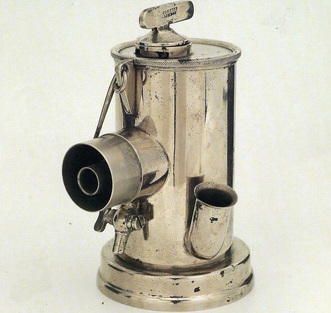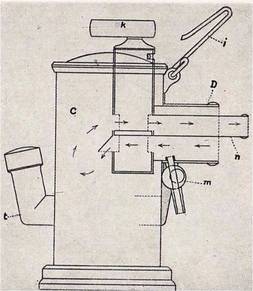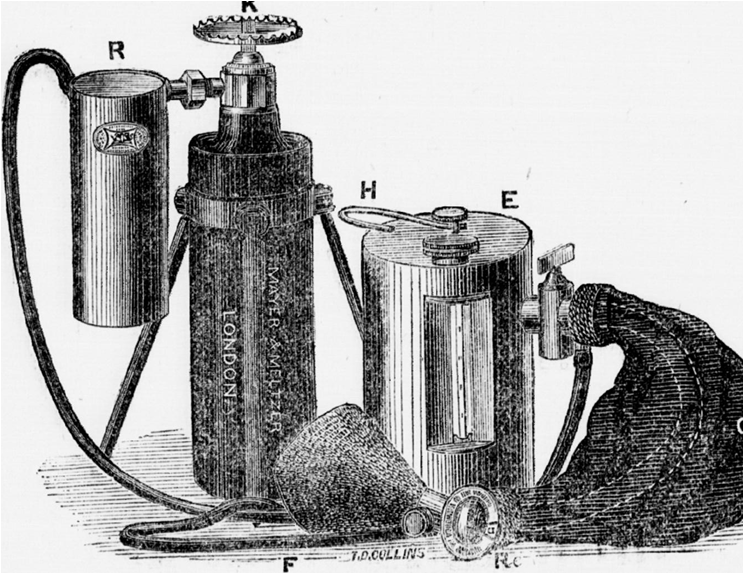Combined gas and ether apparatus, 1876

This was a modification of the double current inhaler and was first described by Clover in 1876(1). The entire apparatus (illustrated below) consisted of a cylinder of nitrous oxide, a bag and face mask and the vaporiser (pictured). The vaporiser could be used alone or nitrous oxide could be admitted by activation of a foot key, The control key on the top allowed nitrous oxide to pass through the ether chamber or bypass it and go straight to the patient. A hook (partially visible) enabled the operator to hang the vaporiser from a strap around his neck. Clover used this inhaler successfully for many years, preferring it to his later portable regulating ether inhaler.
1. Clover JT. On An Apparatus for administering Nitrous Oxide Gas and Ether, Singly or Combined. British Medical Journal. 1876;ii:74-5.
Six months after describing this equipment, Clover wrote:
"Experience in more than three thousand cases in which I have used it convinces me that the administration of ether may be made far less unpleasant to the patient, and equally effective and safe, by first giving enough gas to render the patient unconscious of its taste." (1)
1. Clover JT. Portable regulating ether inhaler. British Medical Journal. 1877;i:69-70.
"Experience in more than three thousand cases in which I have used it convinces me that the administration of ether may be made far less unpleasant to the patient, and equally effective and safe, by first giving enough gas to render the patient unconscious of its taste." (1)
1. Clover JT. Portable regulating ether inhaler. British Medical Journal. 1877;i:69-70.
Combined gas and ether apparatus - diagram

The inhaler contained a water jacket "This is to be kept full.,,Before using it, the vessel should be dipped into a basin of warm water, and rotated until the thermometer stands at about 68 deg. If the room be cold, and if the patient have thin cheeks and large whiskers, the temperature may be 73 deg."(1)
Although this apparatus was popular with Clover and many others, it did not find universal appeal. Sir Frederic Hewitt stated "I know of nothing more terrifying - save the sight of the instruments - that the appearance of the anaesthetist, equipped with Clover's nitrous oxide/ether apparatus. The mental inquietude occasioned by the sight of the ungainly apparatus is not lessened when the anaesthetist commences to work the gas bottle, and the hissing noise warns his victim that his time has come."(2)
1. Clover JT. On An Apparatus for administering Nitrous Oxide Gas and Ether, Singly or Combined. British Medical Journal. 1876;ii:74-5.
2. Hewitt F. The administration of nitrous oxide and ether in combination or succession. British Medical Journal. 1887:745.
